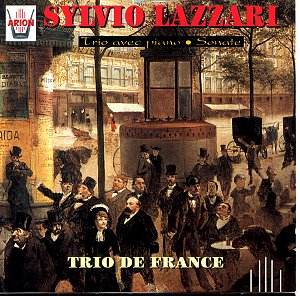 Composer: Gustav Mahler
Composer: Gustav Mahler
Works: Symphony No. 7 in E minor
Performers: SWR Symphony Orchestra, Baden-Baden and Freiburg / Michael Gielen
Recording: 19th – 23rd April 1993, Hans Rosbaud studio, Baden-Baden
Label: Hänssler Classic 93.030
Mahler’s Seventh Symphony stands as a juncture in his output, a work that straddles the line between the late Romantic ideals and a burgeoning modernism. Composed between 1904 and 1905, it was premiered in 1908 and has since elicited a spectrum of responses that range from admiration to bewilderment. Often labeled as the “Song of the Night,” its complex structure and elusive emotional landscape make it a challenging yet rewarding experience for both performers and listeners. The symphony’s distinctive lack of a clear resolution, particularly in its concluding movement, adds to its reputation as one of Mahler’s most psychologically intricate works, inviting a multitude of interpretations.
Gielen’s interpretation of the Seventh is marked by an acute understanding of Mahler’s orchestral palette, bringing forth a vibrant interplay of colors and textures. The opening movement is rendered with a robust energy that captures Mahler’s expansive vision, though Gielen’s decision to treat certain string passages—such as those accompanying the tenor horn solo—as individual semiquavers instead of tremolando creates a somewhat metronomic effect. This interpretation, while unorthodox, provides a fresh perspective on the movement’s rhythmic foundations, allowing the listener to engage with the underlying pulse rather than being swept away by the customary shivering tremors. Notably, Gielen’s pacing sometimes veers towards the impetuous, especially in climactic moments, yet this impulsiveness can be attributed to his intense emotional investment in the music.
The two Nachtmusik movements are particularly well-executed, showcasing Gielen’s ability to navigate the delicate balance between light and shadow that defines these sections. The first Nachtmusik features a hauntingly beautiful performance from the principal horn, whose nuanced phrasing imbues the music with a sense of intimacy and introspection. The second movement unfolds with an unsettling atmosphere, where the interplay of woodwinds and the twanging mandoline creates a surreal landscape that oscillates between serenade and underlying dread. Gielen captures this duality with remarkable finesse, allowing Mahler’s unsettling genius to resonate fully.
The Scherzo, often overlooked in favor of the more dramatic movements, is given a thrilling reading. The orchestra’s enjoyment in producing the bizarre textures Mahler demands is palpable, with the tuba’s thunderous tones emerging vividly in the recording. Gielen’s attention to detail ensures that even the most grotesque sonorities are rendered with clarity, enhancing the movement’s inherent wildness.
Despite the many strengths of this performance, the final movement remains a contentious point. While Gielen’s interpretation holds my attention more than others, it struggles to coalesce into a coherent whole. The frenetic shifts and abrupt stops of the finale can seem exasperating, lacking the thematic unity present in Mahler’s other symphonic conclusions. Although the accompanying booklet attempts to frame this as a reflection of Mahler’s humor, the disjointedness still leaves one yearning for a greater sense of resolution.
The sound quality of this reissue is commendable, with a rich tapestry of orchestral timbres brought to life by Hänssler’s engineering. The balance between sections is expertly managed, allowing both the grandeur of the full orchestra and the subtleties of chamber-like passages to shine equally.
Gielen’s recording of Mahler’s Seventh Symphony aligns itself among the distinguished interpretations of this complex work. It is a performance that invites ongoing engagement, eliciting both admiration and contemplation. While it does not entirely resolve the symphony’s inherent ambiguities, it offers a compelling exploration of Mahler’s intricate sound world, firmly establishing itself as a noteworthy contender in the canon of Mahler recordings.



